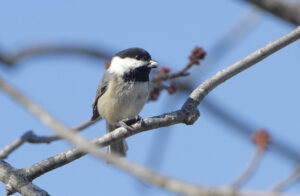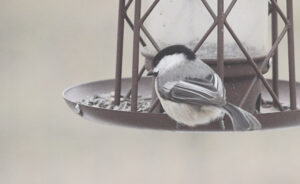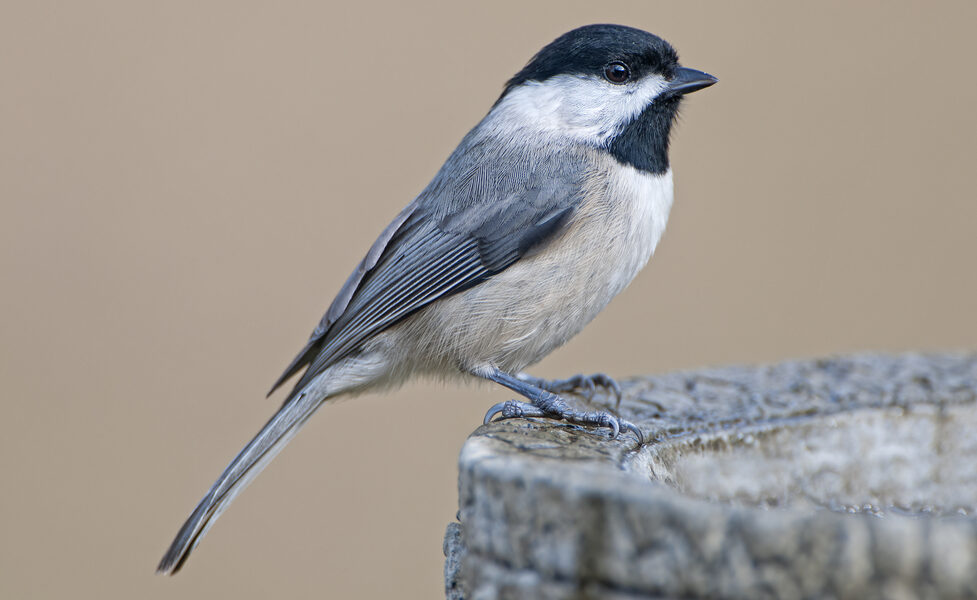Carolina Chickadee, Poecile carolinensis
Black-capped Chickadee, Poecile atricapillus
Bill Rowe
Throughout North America, Europe, Asia, and parts of Africa, chickadees (also called tits) make up a lively and engaging part of the birdlife. The eastern United States is mostly divided between Carolina Chickadees in the south and Black-capped Chickadees in the north, with little overlap. The dividing line, however, runs diagonally across Missouri and right through the St. Louis area, and so we have the pleasure of seeing both and the puzzlement of trying to tell them apart. They perform the same role in the ecology of the forest, roaming around with other woodland species like titmice, kinglets, and nuthatches, and hunting diligently for small prey: insects, spiders, seeds, berries. If you have feeders, you will probably be visited by chickadees, and if you travel to the far north or the west, you might find up to five more species.
IDENTIFICATION: These two are extremely similar. All differences are slight, and the most reliable way to identify them is by range (see Status). That said, here is the general idea: Carolinas (photo above) are slightly smaller, with no wing pattern except a pale line along the inner wing formed by paler gray feather edges; their flanks are smudged grayish-buff, and the lower edge of their black bib is sharp and distinct. Black-caps (photos below) are slightly larger and longer-tailed. They have a more obvious line of white edging on the inner wing plus a small white patch toward the shoulder, which together make a “hockey-stick-shaped” white mark on the wing. Their flanks are usually a brighter buff color, and the edge of their bib is often ragged. Other average differences exist, and the songs and calls differ somewhat as well.
ST. LOUIS STATUS: Both species are common year-round residents, with geography your main guideline for knowing which one you are seeing. In most of St. Louis County and City and all points south, the chickadees are Carolinas; this covers such locations as Forest and Tower Grove Parks and the better part of the suburbs. To the north, in northern St. Charles County, Lincoln County, and adjacent Illinois, Black-capped Chickadees take over. BUT, in between, there is an ill-defined band of overlap, mostly near the Missouri River, where the two species meet and sometimes interbreed, producing hybrids that would be impossible to distinguish. In areas like Busch and Weldon Spring Conservation Areas, and various others, it’s unwise to put a name to the birds, no matter which one they may resemble more.
Learn more and listen to the songs and calls of Carolina Chickadees here and Black-capped Chickadees here.
Black-capped Chickadees (below)
Photo Credit: Al Smith






